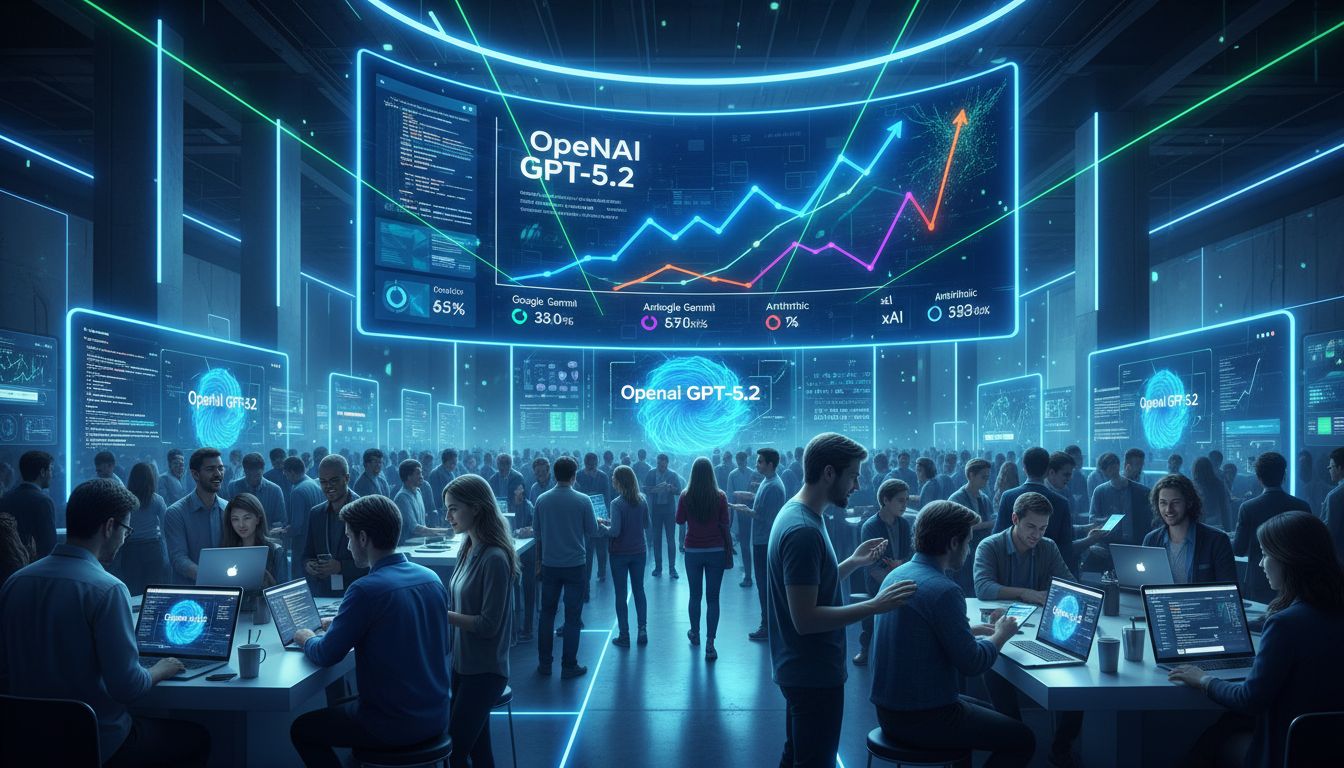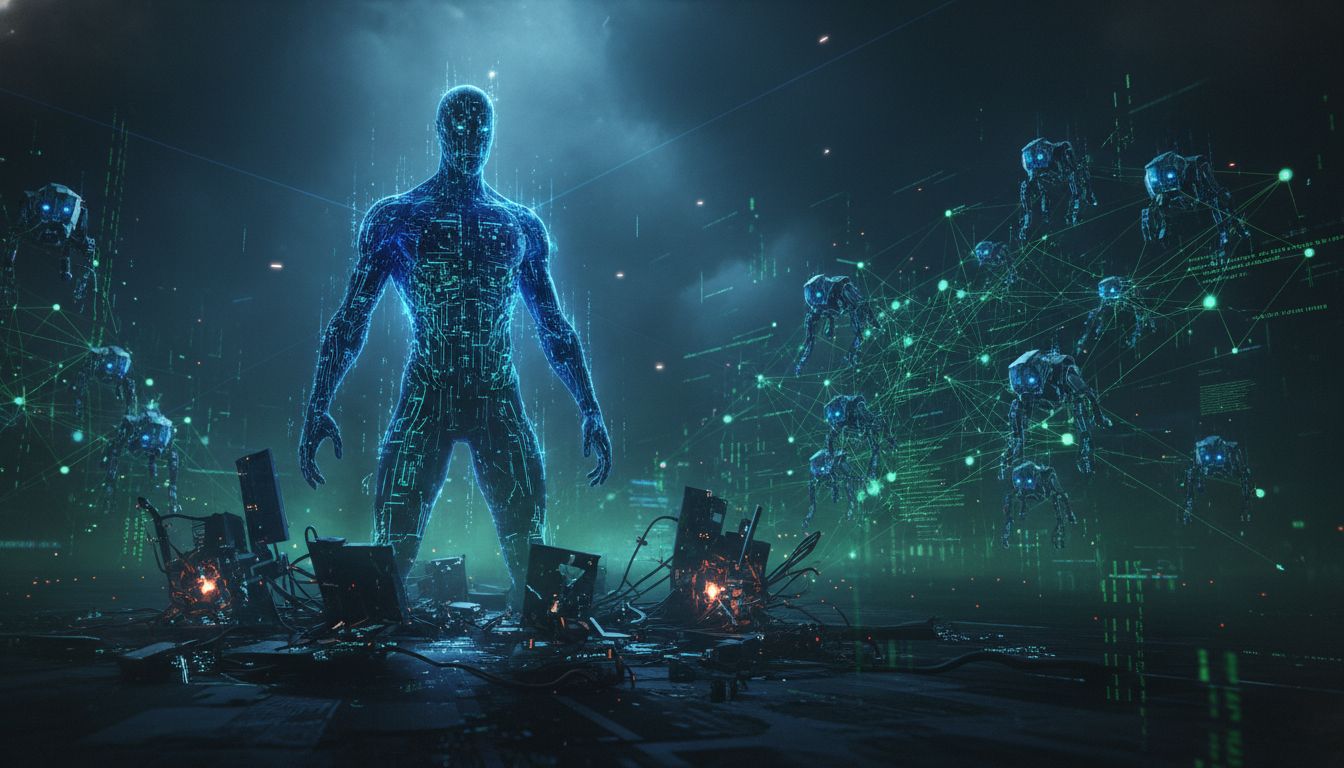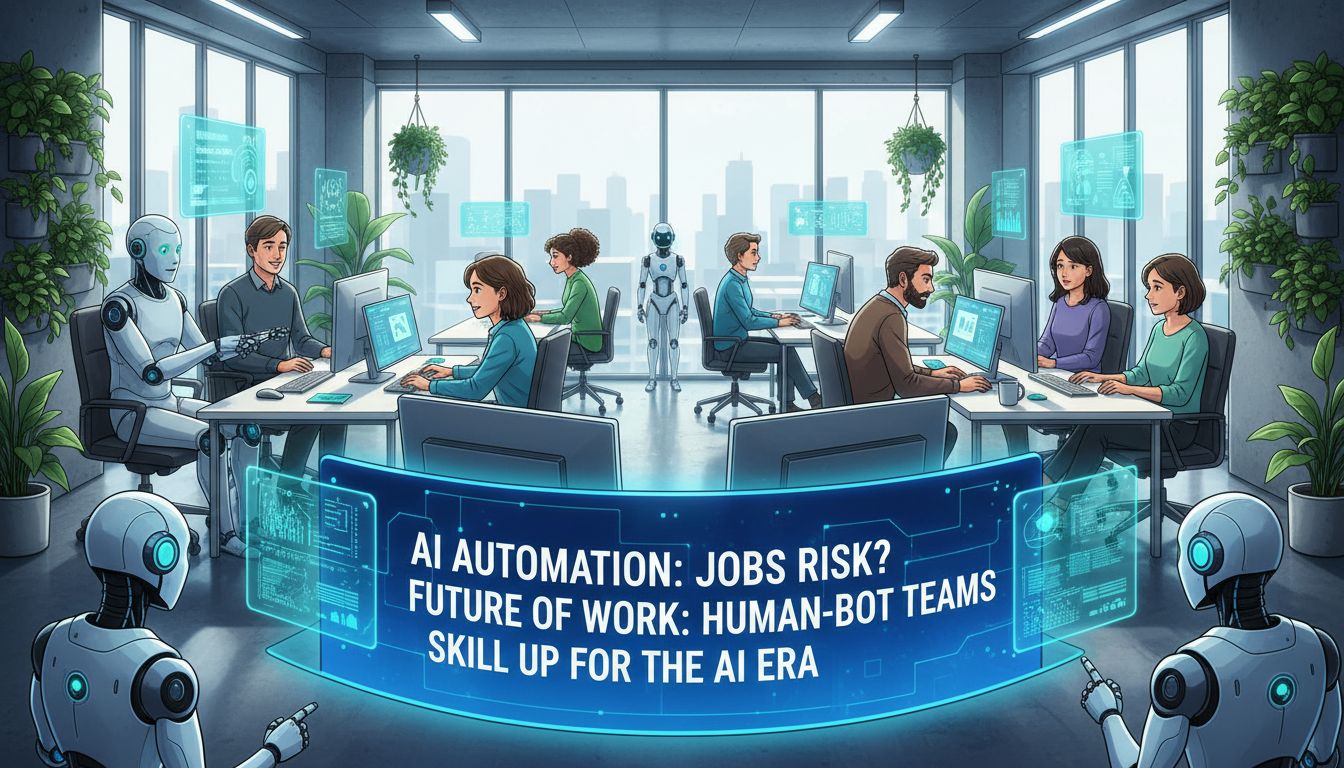
In today’s digital world, cybersecurity is more critical than ever. AI cybersecurity threats bring complex challenges. These threats manipulate systems and disrupt operations, impacting businesses and individuals. This is happening now.
Table of Contents:
- Understanding the Evolving Landscape of AI Cybersecurity Threats
- Defending Against AI Cybersecurity Threats
- FAQs about AI cybersecurity threats
- Conclusion
Understanding the Evolving Landscape of AI Cybersecurity Threats
The digital landscape is rapidly changing with artificial intelligence adoption. Advanced threats are powered by the same technology designed to protect us.
This is an arms race between those trying to prevent security issues and those trying to create them.
How AI is Weaponized by Cybercriminals
Cybercriminals are using AI in unprecedented ways. They are creating AI-powered malware that morphs and adapts, making it a moving target. Traditional security measures struggle to keep up.
Phishing attacks, once generic, are now highly personalized thanks to AI. AI can mimic writing styles and tones, making malicious emails incredibly difficult to detect. This level of deception can fool even security awareness training experts.
AI-powered botnets launch large-scale attacks that overwhelm security systems. This disrupts online services by automating processes.
The Rise of Automated Attacks
Automation is a dangerous aspect of AI cybersecurity threats. Hackers use automated tools to quickly find security holes. AI helps them break passwords almost instantly.
This speed and scale make timely incident response difficult. Organizations must leverage AI for defensive purposes.
Defending Against AI Cybersecurity Threats
AI cybersecurity threats are complex but not insurmountable. New approaches to cloud security, network security, and social engineering attacks are needed.
Strengthening Your AI Defenses
AI-powered security solutions are necessary to counter AI cybersecurity threats. These AI tools analyze large volumes of data. They stop threats in real-time.
These AI tools act as your digital eyes and ears. They detect subtle intrusions before they escalate. They recognize anomalies in data that humans miss. The defensive AI tools automate the process using machine learning models.
Training data is used to teach AI how to respond to an ever-growing landscape of threats that are developed daily by AI systems around the world.
Building a Robust Cybersecurity Strategy
A comprehensive cybersecurity plan analyzes all potential entry points. This multi-faceted defense recognizes the power of AI-driven threats.
| Cybersecurity Element | Description |
|---|---|
| Data Security | Protecting sensitive data through encryption and access controls. |
| Network Security | Implementing firewalls and intrusion detection systems to safeguard networks. |
| Cloud Security | Protecting data and applications stored in the cloud is critically important. |
| Endpoint Security | Securing individual devices like laptops and smartphones. |
| Access Management | Implementing access controls to prevent unauthorized individuals from performing tasks. |
AI cybersecurity threats require vigilance and proactive vulnerability assessments. Real-time threat monitoring is also essential.
Regularly testing defenses is crucial to thwart new AI-enhanced cyberattacks. This involves penetration testing and incident response rehearsals. Doing so prepares organizations for various attacks, including those powered by AI. Penetration testing looks at a lot of potential issues, such as unsecured data sets, malicious bots, access management vulnerabilities, and social engineering attacks.
AI technology changes the cybersecurity risk management game in significant ways. Artificial intelligence is becoming better and better at working remotely through large language models, meaning humans do not have to physically do things they used to. Speech recognition tools are part of how they achieve this, but more tools continue to pop up in this rapidly advancing space. The defensive AI being developed and already on the market aims to defend against things like phishing campaigns that utilize the very technology it runs on, for things such as generating AI voices to carry out the social engineering attacks.

FAQs about AI cybersecurity threats
What are the threats of using AI in cybersecurity?
While AI helps combat cyber threats, it creates new vulnerabilities. Hackers can exploit AI systems if not implemented carefully. Adversarial attacks, where criminals trick AI systems with altered input, are a major threat. Threat actors are using these attacks more and more.
What are the security vulnerabilities of AI?
AI systems have inherent vulnerabilities due to their novelty. Adversarial attacks against trained datasets are a key vulnerability. AI algorithms require data, which becomes a problem if breached.
Exposed data can be a source of adversarial AI. These models learn patterns very easily. As AI applications improve and as artificial general intelligence becomes closer to a reality, people worry that these tools may even surpass human intelligence and solve complex problems faster than ever before. Using AI to solve complex issues like building safer AI comes with risks and considerations for the future.
What is the main challenge of using AI in cybersecurity?
The rapid development of AI cybersecurity threats poses a significant challenge. Security teams are in a constant race to stay updated. AI advances quickly, making it hard to develop countermeasures for advanced attacks.
AI tools, including open source and public tools, can be leveraged to perform tasks with just a few lines of human-provided input. Mitigating potential threats from malicious users can only be addressed with human intervention. As long as humans create responsible AI tools, these systems learn how to defend and prevent a majority of the AI-generated cyber security threats of today.
What is the biggest threat of AI?
Misinformation spread through deep fakes and similar deceptive AI technologies is a growing threat. Deepfakes leverage machine learning and AI models trained on legitimate sources of photos and video footage to produce results that look like and even sound like the source being used, without it being actually real.
These issues, along with hacking and attacks on critical infrastructure, are major concerns. Phishing emails can become very personalized to where they appear to have originated from someone close. These systems aim to automate tasks and trick people by building convincing phishing email campaigns and automating phone call attacks by impersonating real people using fake speech that sounds just like their actual voice.
Conclusion
AI cybersecurity threats are challenging but manageable with strong defenses and smart solutions. Businesses and individuals can address these challenges head-on.
Staying informed about new AI security trends is crucial. It ensures systems are prepared for the future of security. Protecting your data is paramount as AI cybersecurity threats increase.
Regularly review safety tips and consider working with cybersecurity experts. Learning from online communities and firms provides valuable strategies. Protecting against emerging threats that leverage new AI algorithms is a top priority for network security, cloud infrastructure, and more. As long as humans stay diligent about keeping defensive systems up-to-date with AI capabilities, then we stand a chance to beat it. As long as ethical hackers use AI to create security and governments also use the latest technology in the space, these attacks are mitigated daily.






